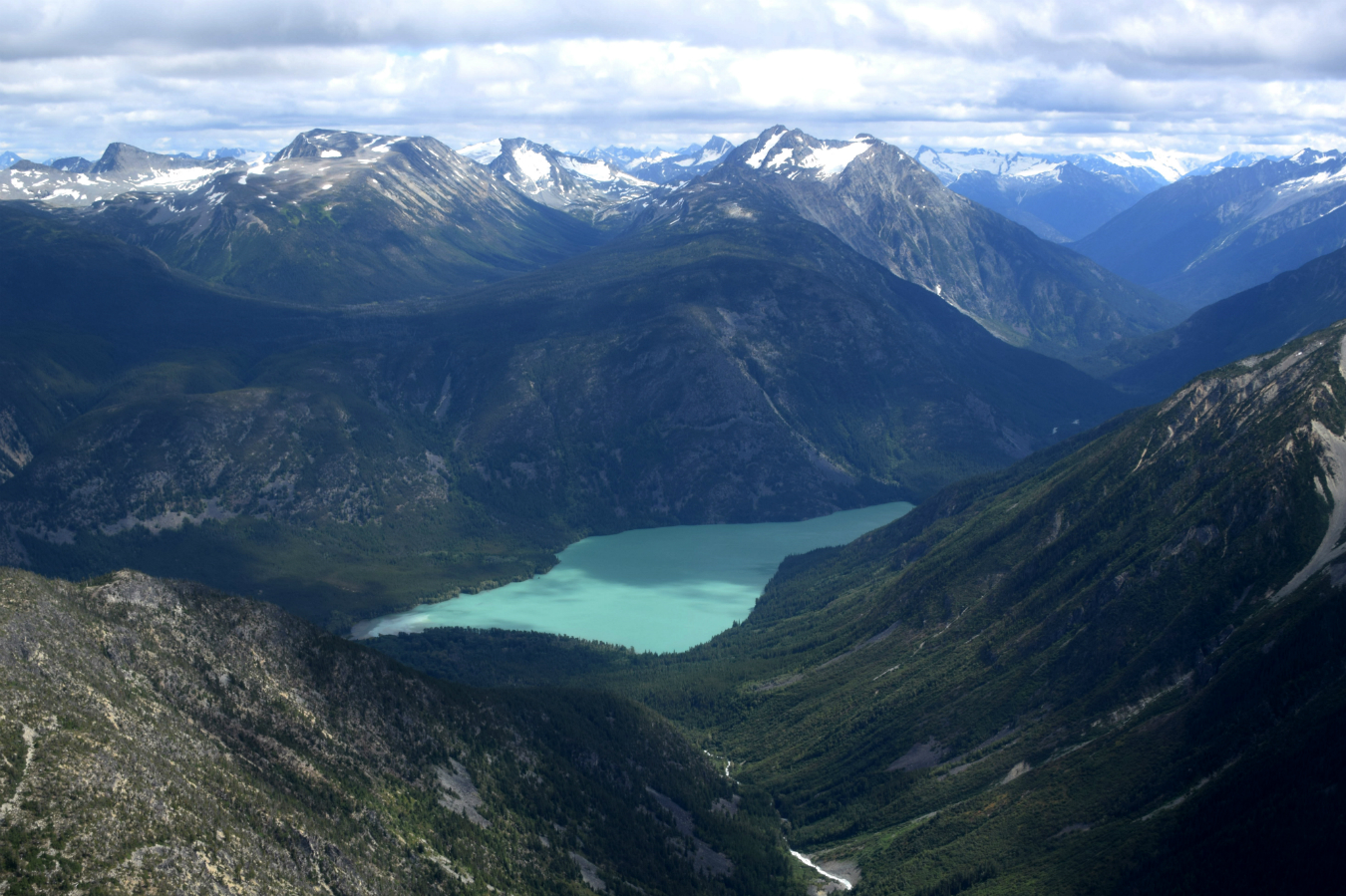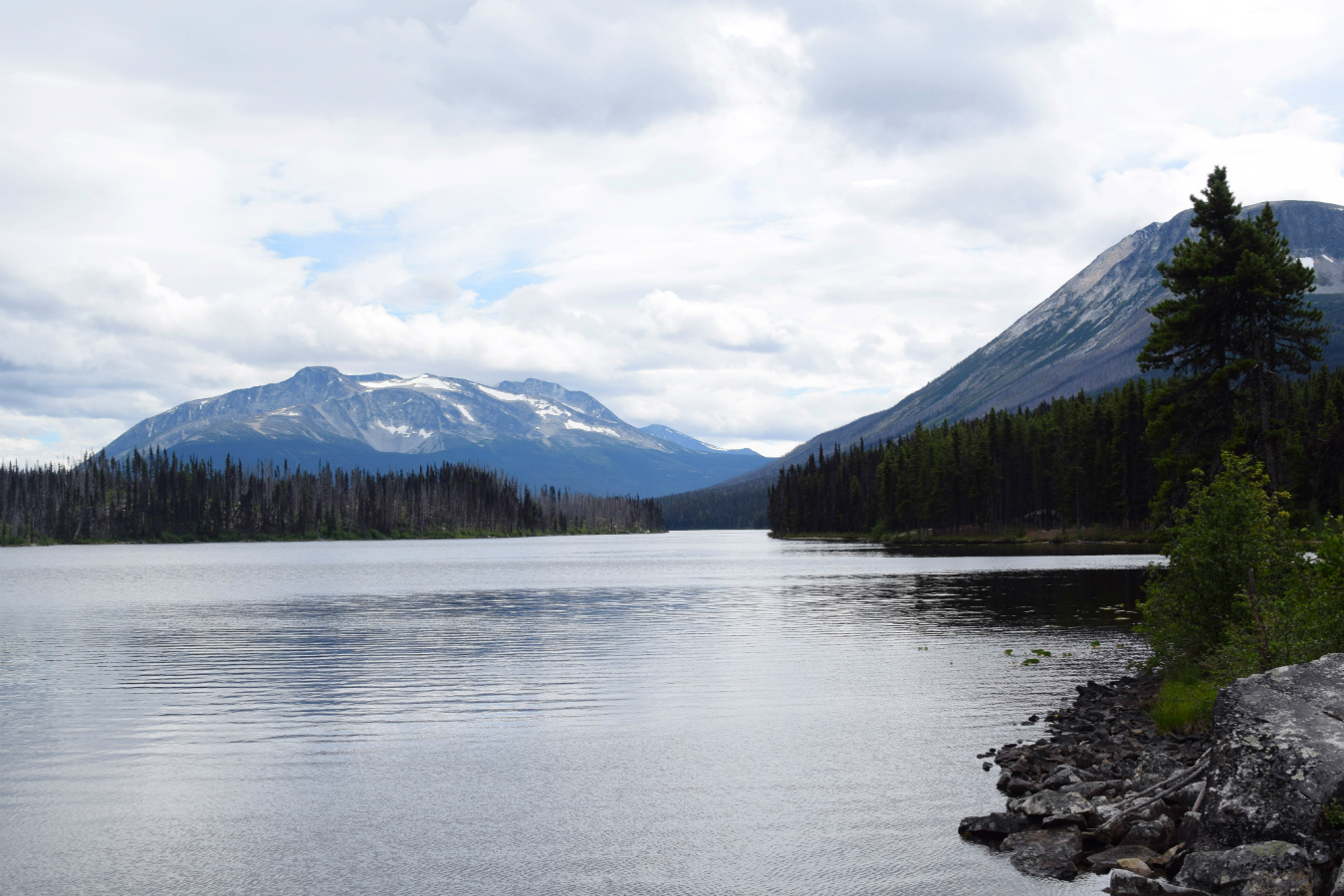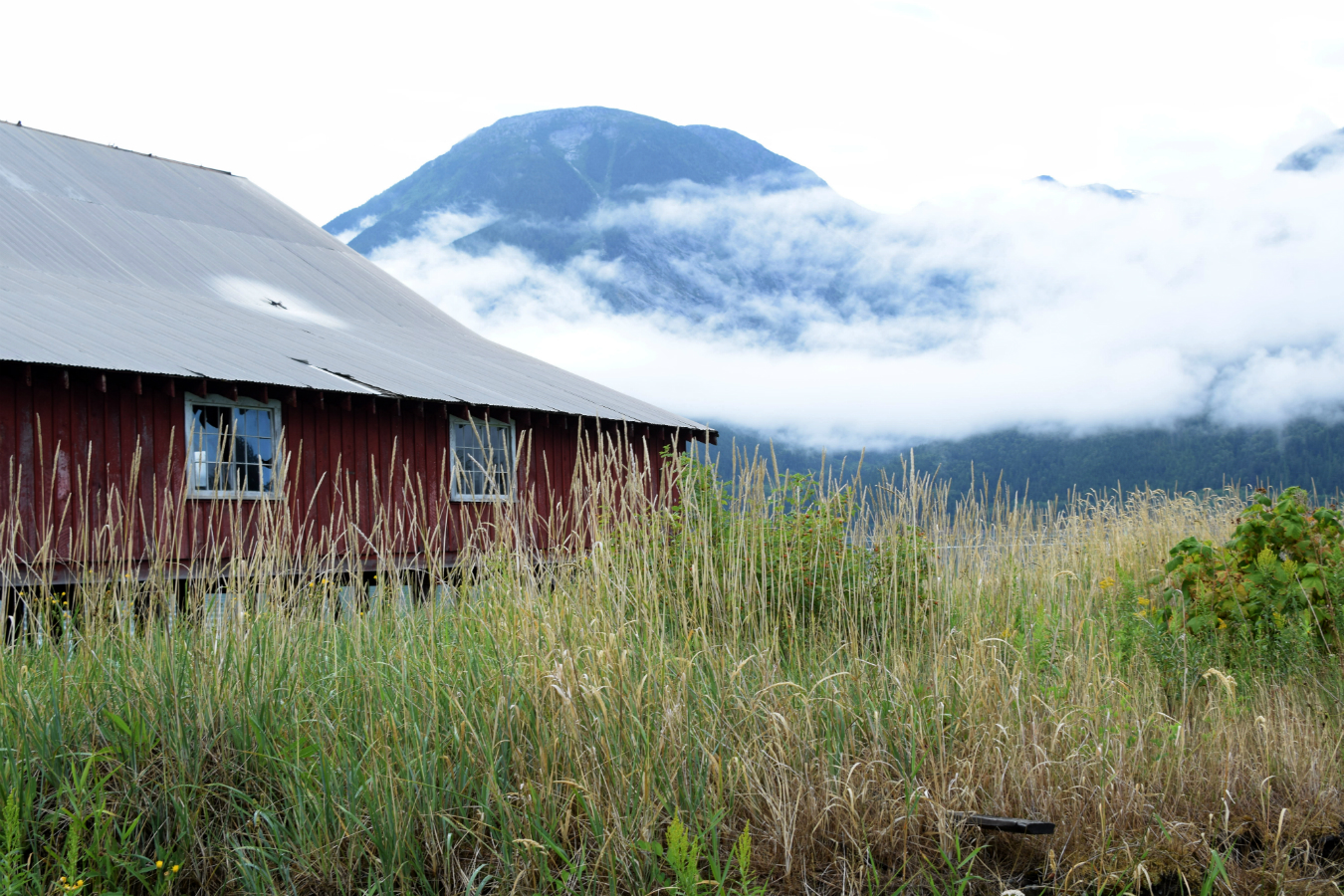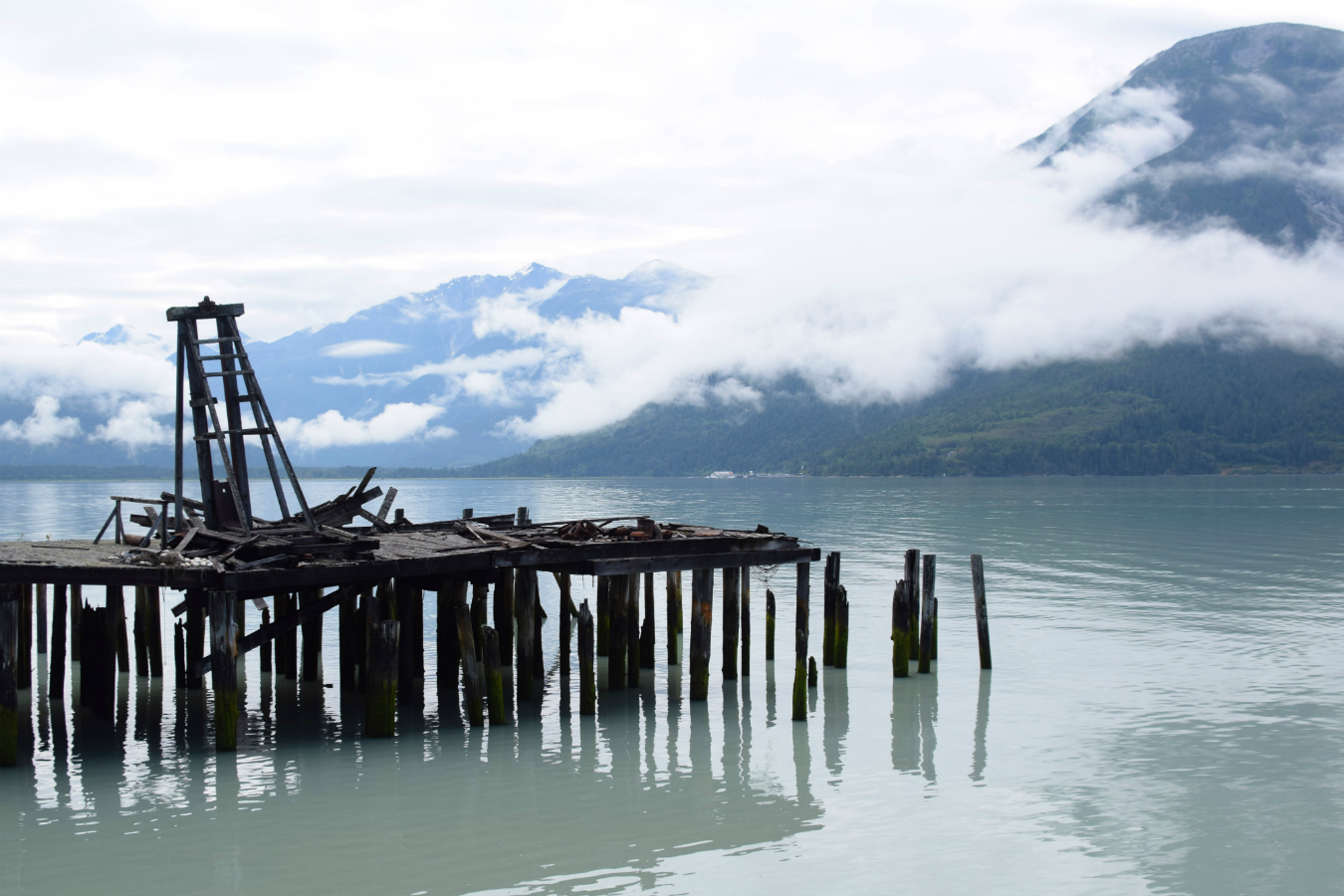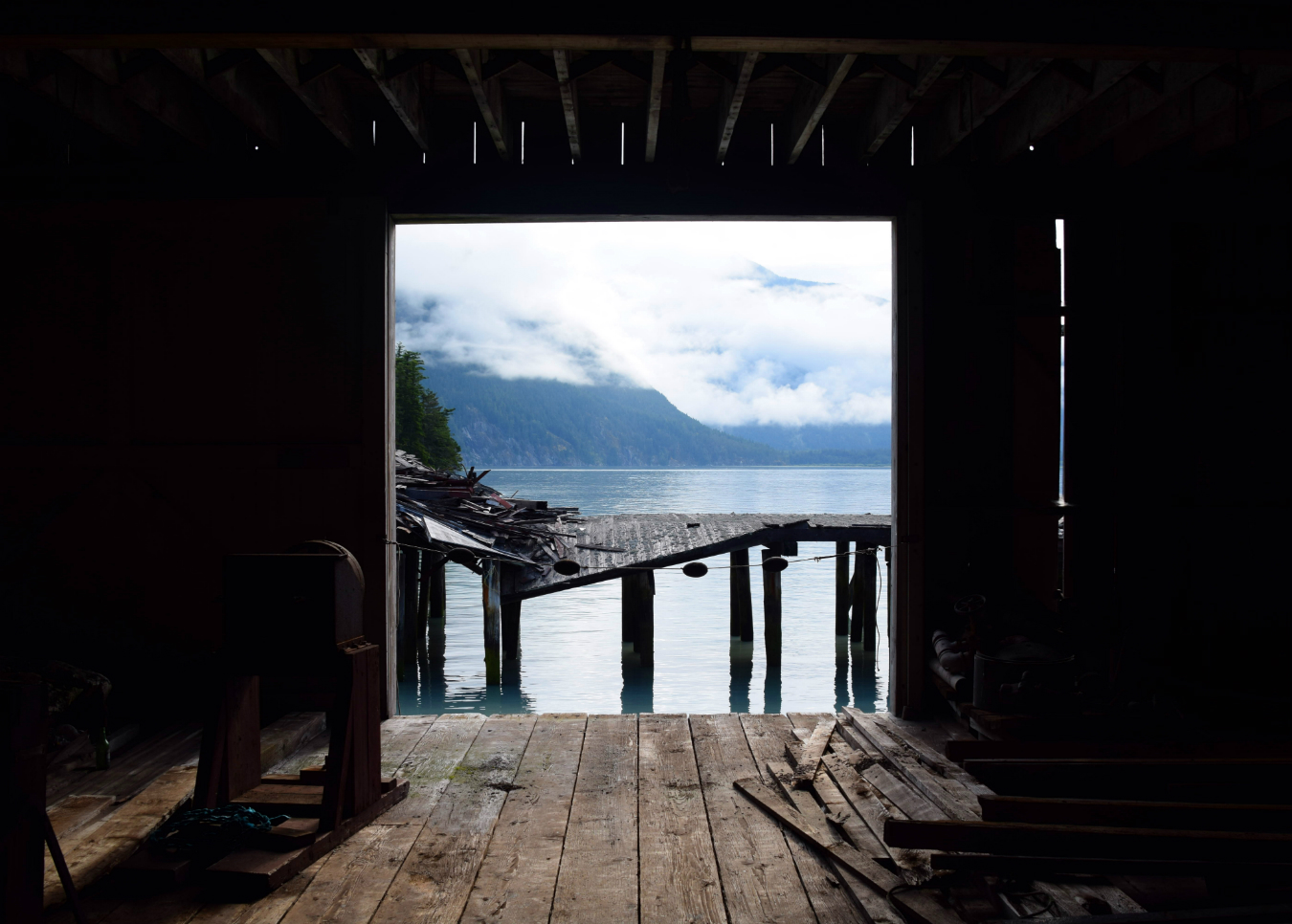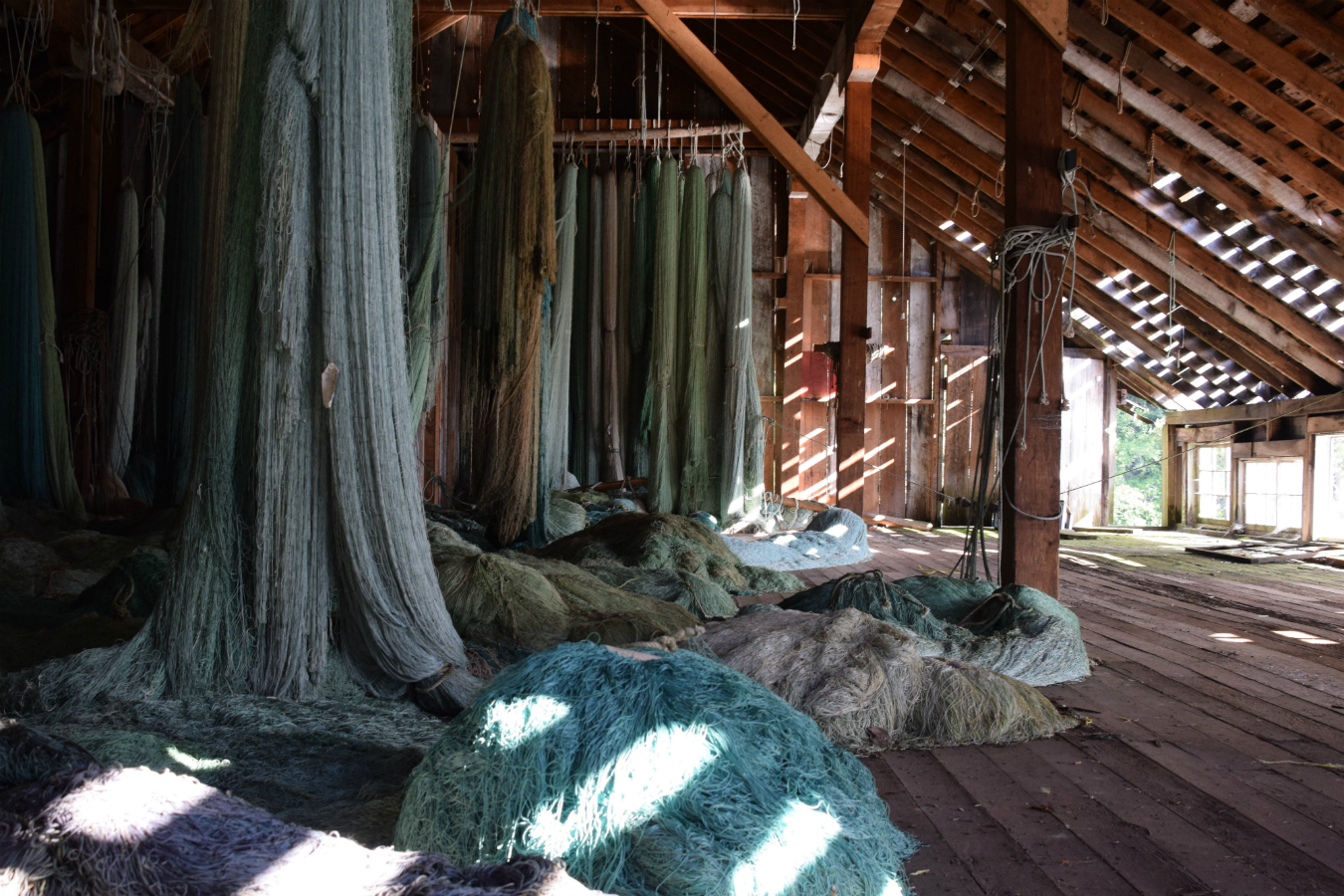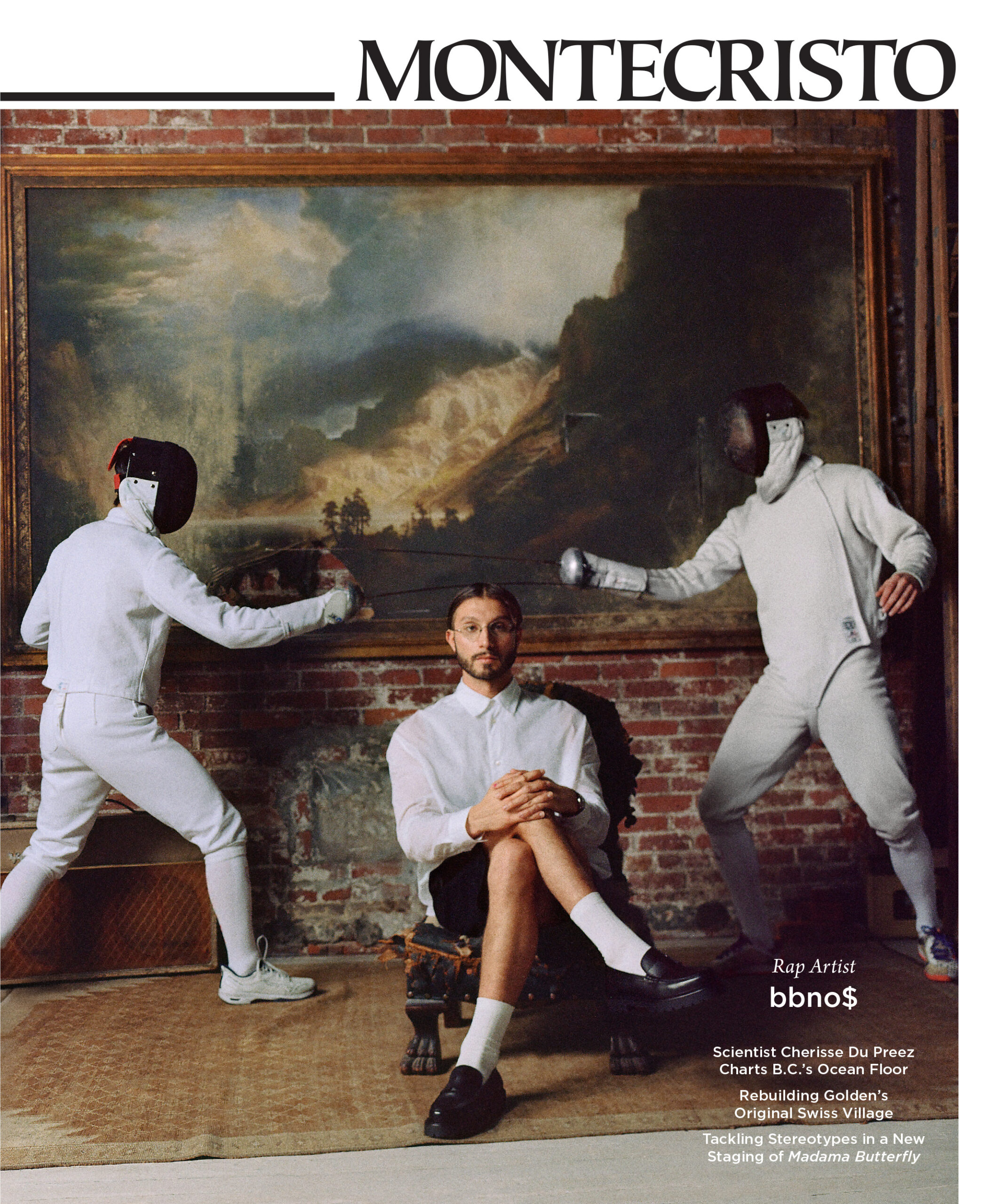Tourists emerge in Bella Coola with the yearly salmon run, armed with nothing but a zoom lens and a guide, waiting to capture images of grizzlies and black bears feeding in their Great Bear Rainforest habitat. If visiting Bella Coola when it’s not peak bear season, though, an equally memorable experience still awaits within the destination’s understated, magical side—a mystery usually overshadowed by its showier acts.
The first of its mystical displays: on top of a mountain looking onto the Bella Coola Valley, feet follow a granite ridge, curving against the landscape, a monstrous spine. The contrast between the wildflowers with their resilient stems, the grand glaciers over rocky facets, will force you to stop, to skip a breath. For hours it goes on like this, stumbling over crouching juniper and crystal puddles.
The second whimsical moment: stepping onto a dock, floating on the glacial waters of the Bella Coola River, its surreal palette informing its supernatural quality. Hues of silvery sage, aquamarine, and faded teals swirl below the hull of a Bella Coola Grizzly Tours fishing boat as it sails through the milky waves of the North Bentinck Arm. Untouched shores with wild forests stud the waters, and along its edges, lichen and kelp peeks out of the undulant waves like an ochre fringe. Weaving in and out to see waterfalls, the faded landscapes behind are reminiscent of Toni Onley’s watercolor paintings. When docked at a wooden bridge leading up to a rain-forested bank, tuck under evergreen branches until the trees open to a natural hot spring, pouring from the earth and collecting in hidden baths. After hours immersed in nature, pulling spot prawns straight from the salty ocean results in a meal both honest and delicious.
The third: once a thriving industry, The Tallheo Cannery exists today as a memorial to a mysterious moment in time. Its general store now displays historical artifacts such as hand-drawn posters on aged wood, newspapers, old ledgers, canned goods, and even glimpses into the racial divides of days passed. Most impressive is the attic of the old ship repair building, haunting hand-woven fishnets hanging from its tall wooden rafters, all in shades of glacial waters more magnificent than any art installation, housed in a gallery of its own authenticity.
The fourth: a dinner of whole-roasted salmon (freshly caught), a nostalgic potato salad with tubers pulled from the moist earth mere hours before, a bowl of runner beans—steamed and still tasting of vines—and a coffee cake with berries and whipped cream, humble and inviting. Much like the names of the area’s sights (Stupendous Mountain and Lonesome Lake), the food is simple, direct, and playful, hinting at the land’s history and at childhood memories.
The final moment of mystique in Bella Coola: meeting local guides from the Nuxalk Clan at the foot of a trailhead. A quiet gentleman with silver hair, Brian Apps, stands outside of the crowd wearing jeans with a large Western-style buckle and a neon construction jacket, and holding a cane in his right hand. Climb through the damp rainforest where the soft, springy ground parts for boulders, slick from the rain. It is the perfect setting to learn short histories and fragments of an ancient language.
Pausing at rocks covered with curious petroglyphs dating back 5,000 to 10,000 years, Apps begins to decipher them, stopping at a cup-shaped dip on the top of a smooth boulder etched with a cross in the centre of the hollow; he explains that it points true north. When he discovered this boulder, he says, it took him months to peel off the moss, little by little, so as not to disturb the forest. He dips his hands in the creek below and fills the void, creating a glassy pool. “When you look at your reflection in the water, you become the iris of the eye,” he says, and for a miniscule moment, your eyes are locked in mutual appreciation for this place, hidden in the world, with a mystery still unseen.
Photos by Jackie Kai Ellis.
